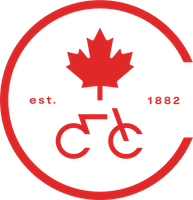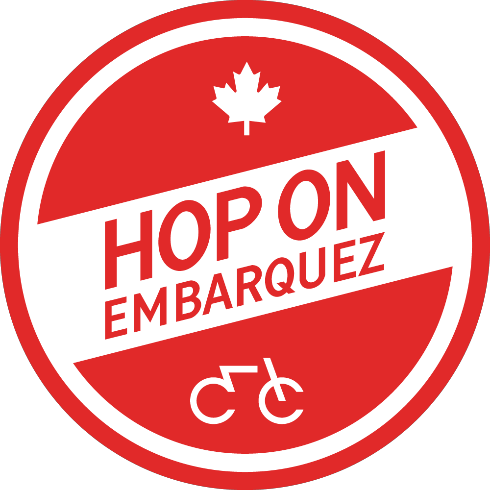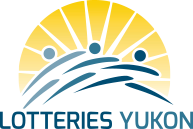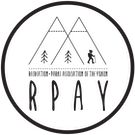2020 Yukon cycling survey results
Last updated: March 24, 2021
Thanks to everyone who provided feedback on our 2020 Yukon cycling survey. The survey was completed by 504 people.
The CAY board is using this information to update our strategic plan and provide related resources and support to Yukon cycling clubs and organizations.
We’ve organized this report page into distinct topics. Choose any of the following links to read more.
- Demographics
- Key takeaways
- Riding bicycles
- Electric/e-bikes
- Motivations to ride a bike
- Membership in Yukon cycling clubs or organizations
- Motivations to join a Yukon cycling clubs or organizations
- Motivations to purchase a Yukon cycling club or organization membership
- Participation in events
- Reasons people don’t participate in events
- Communications about upcoming events or activities
- Quality of urban cycling infrastructure
- Quality of trail infrastructure
- Dirt ‘n Soul Mountain Bike Park
- Improving Yukon cycling
Demographics
- 92% of survey respondents were from Whitehorse.
- Other respondents were from Dawson City, Mount Lorne, Marsh Lake, Carcross, Ibex Valley, Teslin, Haines Junction, Burwash Landing, Watson Lake or other small areas near these Yukon communities.
- Over 40% have lived in Yukon for over 20 years. 23% have been here between 4 and 10 years, while 22% between 11 and 20 years.
Key takeaways
- Respondents see advocacy, both for on and off-road cycling of various disciplines, as an important and under-served function of cycling organizations in Yukon.
- Advocacy and education around commuting and urban cycling in particular are viewed as a gap in Yukon.
- There is a desire and need for more communication and outreach to the cycling community, on a variety of subjects. For example, what clubs/organizations exist, what they do, cycling education and etiquette and what events are being offered and when.
- Many respondents have not been a member of any Yukon cycling organization and often this is because they don't know what organizations exist or what the benefits of joining are.
- People want more inclusive events that feel welcoming, non-competitive and represent the diversity of skills, abilities, ages, and genders that exist in the Yukon cycling community.
- A feeling of community, comradery and inclusiveness is important to many people.
- This aligns with the fact that most people who responded to the survey are interested in riding for recreation, fun, and fitness rather than competition and racing.
- There is a strong desire for skill development for recreational riding, as opposed to training camps.
- Respondents were generally more happy with the quality of dirt and snow trails than the quality of urban paths and roads for cycling.
- Despite many people citing e-bikes as too expensive, ownership is expected to grow with an aging population and the availability of a government rebate and so should be considered in planning moving forward.
- Children and youth participating in cycling is also growing, particularly with an interest in mountain biking. There is a desire to see more events and categories within events targeted at children and youth.
Riding bicycles
- 76% of respondents have been riding a bike for more than 20 years.
- People regularly ride their bikes, with 39% of respondents stating they ride 4 to 5 days per week. 37% ride 2 to 3 days per week.
- The majority of respondents ride their bikes all year round, with 60% riding in winter as well as spring, summer and fall.
- Over 80% of respondents said they ride their bikes on dirt trails.
- This was closely followed by urban and bike paths and paved roads (both ridden by about 78% of respondents).
- 59% of respondents said they ride gravel roads, about 53% said they ride snow trails in winter, while only 9% ride BMX and jumps and only 4% ride skateparks and participate in street riding.
- Among those respondents who said they ride other types of terrain (about 7.5%), the main terrain included:
- Indoor spinning.
- The bike park.
- Multi use trails and old mining roads.
Electric/e-bikes
- The majority of respondents (62%) said they did not intend to buy an e-bike in the next year while about 27% said they were undecided. About 11% said they did intend to buy.
- Among those who provided an explanation for why or why not they intended to purchase an e-bike, the main reasons cited for not purchasing included:
- A preference for using self-power and/or getting exercise.
- The infrastructure for cycling is unsafe.
- They are too expensive, and/or the expense can’t be justified.
- They are not versatile enough.
- Don’t need one (including those who said they already bought one).
- They are too heavy.
- There is concern for e-waste/battery replacement.
- The main reasons in favour of purchasing included:
- There is a government rebate available.
- To improve commuting/running errands and/or replace a car for commuting/running errands.
- For assistance going up large hills or long distances.
- For fun.
- To be able to continue biking in the face of physical impediments.
Motivations to ride a bike
- When asked why they ride their bikes, almost all respondents (95%) said it was for recreation and fun.
- 87% said it was to gain and maintain fitness, while 62% said it was to commute to and from work or school.
- Almost half (47% of respondents) said it was to run errands, while only 34% said it was to compete and race at events.
- About 14% of respondents had other reasons, which mainly centred around:
- Exercising with their dog(s).
- Travel, backcountry trips and outdoor pursuits.
- Reducing their environmental impact.
- Reasons related to family (for example, teaching or role-modelling for kids).
- Spending time with friends and on fun and wellness.
- Using bikes as their only means of transportation.
- Employment or volunteer reasons.
Membership in Yukon cycling clubs or organizations
- The most common answer from respondents (almost 43%) was that they had not been a part of any Yukon cycling club or organizations in the past 5 years.
- Of those who were a member, the most commonly reported membership (almost 42% of respondents) was to Contagious Mountain Bike Club (CMBC).
- Membership in Velonorth Cycling Club, Whitehorse Urban Cycling Coalition, U Kon Echelon Cycling Club, Team Boreale and Terra Riders made up the remainder.
- Among those who selected “other club or organization”, specified organizations included:
- KCIBR.
- Yukon Triathlon.
- Previous clubs or race series, no longer held.
- Informal/non-incorporated groups or clubs, particularly on social media.
- Outside groups, such as SORCA and IMBA.
- Notably a few people listed Dirt Girls, which suggests there is a distinction to some people between CMBC and Dirt Girls.
Motivations to join a Yukon cycling club or organization
- Over half of respondents (almost 51%) said it was to show support for advocacy for trail maintenance and development.
- Almost 41% said it was to participate in group rides, almost 40% said it was to participate in competitive organized cycling events and almost 39% said it was to participate in non-competitive cycling events.
- The least common responses included to participate in winter trail grooming (about 10%), to purchase club clothing and merchandise (about 5%) and to provide financial support for competitive athletes and coaches (about 4%).
- Among those who cited other reasons (about 9% of respondents) those reasons included:
- To meet others who want to do casual or recreational rides.
- To have access to information on trails, events, etc.
- Because their children participate in events.
Motivations to purchase a Yukon cycling club or organization membership
- A number of respondents commented that they had no desire to join an organization, and that their cycling was a very individual activity.
- If there was a desire to join, respondents seek:
- More inclusive events and rides, for all skills, abilities, ages and genders.
- More advocacy for safe urban cycling infrastructure.
- Bike maintenance and repair workshops and co-operative equipment.
- More advocacy and support for building and maintaining trails, and building a wider variety of trails. For example, jump trails or trails in different neighbourhoods.
- Skill development.
- Financial or other incentives. For example, more/better discounts, reduced entrance fees to events or members-only events.
- Education on cycling safety.
- Events throughout the Yukon and not just in Whitehorse.
- Events focused on children and youth.
- Better access to information on trail conditions, events, etc.
- More options for training and racing.
- Respondents asked for better outreach on organizations that exist, what they do and the benefits of membership.
Participation in events
- The majority of respondents (79%) said they participate in events to challenge themselves and gain fitness.
- A little over half of respondents said it was to ride their bikes in different places or terrain (53%), to maintain relationships with people they know (52%) or to motivate themselves to train for something (51%).
- About a third of respondents said it was to meet new people, while only approximately 5% of respondents said it was prepare for representing Team Yukon at major games and competitions.
- Other reasons included:
- To have fun.
- To develop skills and fitness.
- To encourage and promote involvement of children and youth.
- Because friends and family wanted them to.
- For employment.
Reasons people don’t participate in events
- Almost a third of respondents cited scheduling conflicts (almost 30%), other reasons not listed (about 29%), and/or that they didn’t know the events were happening (about 29%).
- About 28% of respondents said they don’t feel like they fit in, about a quarter said they don’t have time, and about 22% said the events that are offered don’t appeal to them.
- Other reasons included:
- Not interested in organized events.
- Don’t enjoy competitive events.
- Prefer to just ride by themselves or with friends and family.
- People feel they lack the fitness or skill to participate, and/or the events are not designed for them. For example, for their age group.
- It is challenging to fit in events with competing demands such as family, work and other sports.
Communications about upcoming events or activities
- The most common response was by social media (about 68% of respondents), followed by email newsletter (54%) and website (37%).
- A third of respondents cited friends’ recommendation/word of mouth as a desired form of communication about events and activities.
- Other suggestions included:
- Flyers and posters.
- A single calendar of events.
- Strava.
Quality of urban cycling infrastructure
- Among those who answered this question, 51% rated the quality of infrastructure (paths, bike lanes, intersections and/or roads) as somewhat safe and enjoyable.
- 26% of respondents said the quality is not very safe and enjoyable.
- Main suggestions in the comments included:
- Improve the connections of paths and road intersections where cyclists meet motorists. Some are viewed as very dangerous.
- Addition of protected bike lanes that are maintained in winter.
- Distracted drivers and lack of safety education for both cyclists and motorists.
- Provide a safe alternative to riding on highway shoulders for those who live outside of downtown Whitehorse.
Quality of trail infrastructure
- Among those who answered this question, about 62% rated the quality and diversity of trails as excellent or great.
- Slightly more than 12% of respondents said the quality and diversity is either somewhat or not very good.
- Main suggestions in the comments included:
- Yukon would benefit from more trail diversity, including flow trails, adaptive mountain bike trails and trails with more challenging technical features.
- Expand grooming of winter trails to areas other than Grey Mountain and Mt Mac.
Dirt ‘n Soul Mountain Bike Park
- Almost half of respondents (49%) said they or those in their household had used the Dirt ‘n Soul Mountain Bike Park in the past 5 years.
- Among those who said they had used it, the pump track was the most commonly cited feature that was used (82%), followed by the wooden drops (almost 70%), the skinnies (about 68%) and the offshoot trail with tabletops and berms (about 65%).
- Only 56% of respondents who had used the Dirt ‘n Soul park reported using the jump line, and only about 31% reported using the wall ride.
- Only 15 respondents noted other features that they used, most commonly the teeter totters (which have been removed due to decay) the skinnies and the bridges.
Improving Yukon cycling
- Advocate the city for better cycling paths that connect existing paths for a cohesive Whitehorse network, connections to country residential areas, safer cycling infrastructure (for example, protected bike lanes) and improved clearance of snow from paths and bike lanes.
- Make backcountry bikepacking routes more accessible.
- Provide information and tips on bike touring and bikepacking.
- Education for drivers and cyclists.
- Children and youth categories at all events.
- Enduro races.
- Support building more challenging trails.
- More trail maintenance to prevent degradation as the number of mountain bikers continues to increase in Whitehorse.
- Maintain good working relationships with other trail groups.
- Bike maintenance and repair courses.
- Improve trail markers and maps.
- Remove gravel on roadsides.
- Events inclusive of older adults and e-bikers.
- Secure and covered bike parking downtown.
- Develop a “one stop shop” website for all things Yukon cycling.
- Ensure the cycling community is not elitist.
- Ensure Yukon is part of Canada’s Active Transportation Strategy.
- Find ways for children and youth who can’t afford bikes to participate in cycling.
- Casual group rides.
- Move all cycling organizations under one umbrella to limit need for different insurance policies, memberships and spreading out of volunteer efforts.
- Build a BMX track.
- Downhill races, more trails at Mt Sima.
- Hire summer students for trail maintenance.
- Consider charging for winter trail grooming and summer trail work.
- More singletrack linking existing riding areas.
- More infrastructure such as outhouses at popular trailheads.
- More financial support for Mt Sima.





